The first color photos of Hanoi
VietNamNet Bridge – The Sword Lake, the Temple of Literature with primitive dirt roads or the girls in brassiere are very lively in the works by French photographer Leon Busy.
Photographer Leon Busy was assigned by the Albert Kahn Museum in France to go to Vietnam to capture the lives of the people in northern Vietnam (Tonkin) from 1914 to 1917. Sixty photos were selected from 1,500 works by Leon Busy for the exhibition "Hanoi, color 1914-1917" from December 9, 2013 through January 1, 2014 in Hanoi.

This is a picture of the Hoan Kiem (Sword) Lake.
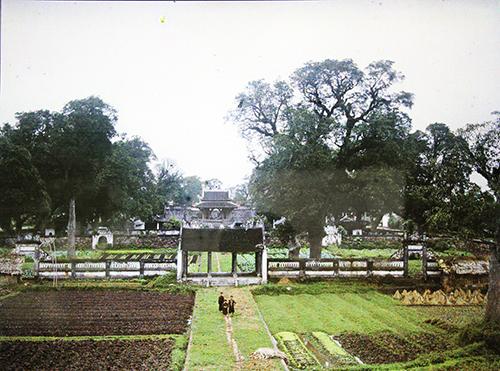
Through the photographs, the audience can see the normal life or the social classes at that time. The photos also express the belief and religion of Hanoi. In photo: The Temple of Literature.
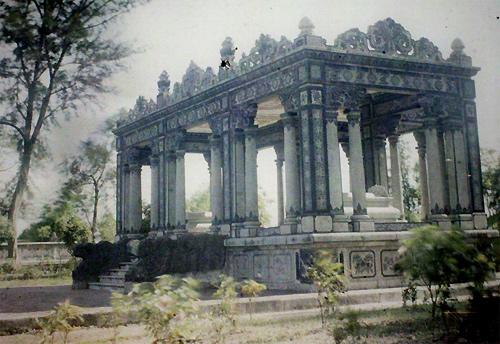
Viceroy of Ton Kin Hoang Cao Khai's tomb, which is now ruins.
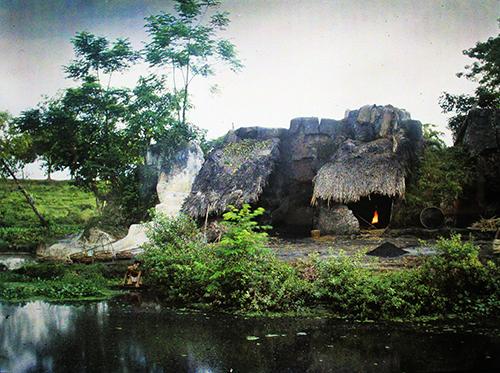
The photo of a paper making base in the Buoi village, Hanoi. The paper making trade in this village has disappeared.
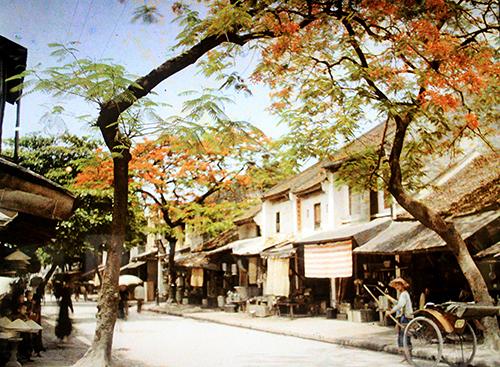
Many photographers left valuable photos of Hanoi in the past, but these photos, which have never been published, are special because they are the first color photographs of ancient Hanoi. The color photography technique first appeared in 1903. In photo: Hang Thiec Street.
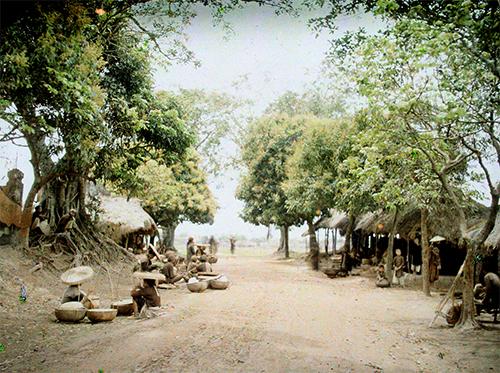
A rural market in Hanoi’s suburbs.
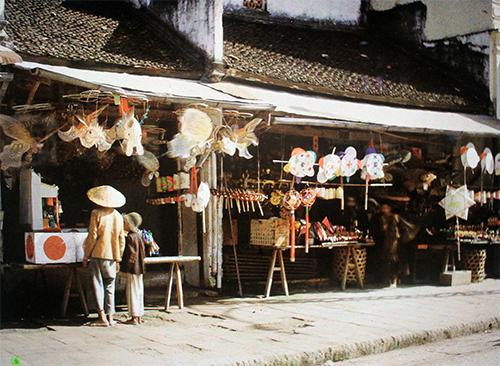
The street of colorful lanterns.
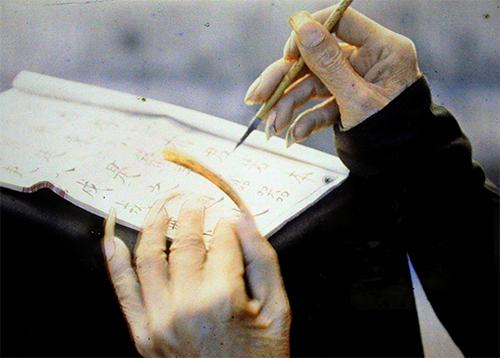
"The nails of a Confucian scholar" photo shows that in the past, Vietnamese scholars did not do manual work.
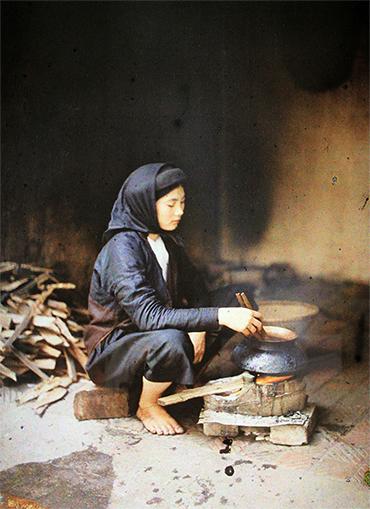
The first color photographs also demonstrated discrimination in Vietnam in the past. In the picture: A middle-class woman was cooking rice.

Hair buns, wearing expensive clothes, with servants standing behinds... are the image of women of the wealthier class. In this picture the three women were playing cards.
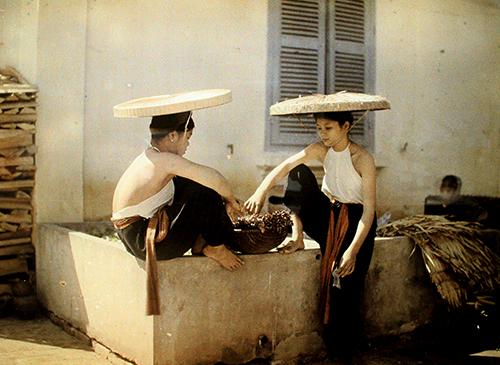
Leon Busy also arranged scenes to photograph. Two girls sitting near the tank wore the traditional costume - white brassiere, black pants, light-colored belt and conical hat.
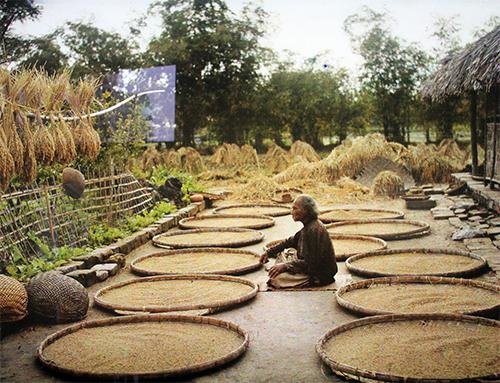
A farmer sitting amid the drying ground, showing the concept of wealth in the ancient agricultural life. The larger the drying ground is, the more rice the family has.

Two rural women just picked up spinach, they wore four-panel dress, white brassiere and kerchief.
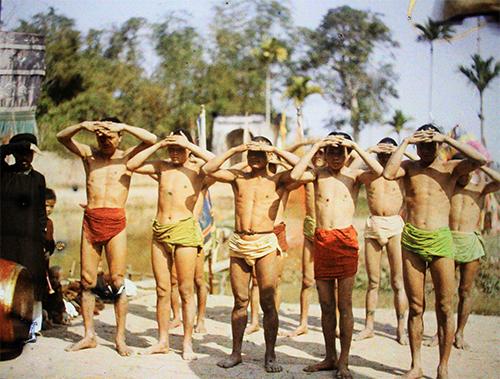
Wrestlers worship the village god before a match (in Xa La village, Ha Dong district).
|
Insect food in Hanoi
VietNamNet Bridge – There is a restaurant in Khuong Thuong village, Hanoi, where all cuisines are processed from insec (Last update 01/06/2011)
The restaurant opened in 2002, owned by Mr. Nguyen Tat Kien. Kien said that all cuisines are processed by his mother, who lived in Thailand for many years.
Kien is not present at the restaurant often because he has to travel throughout the country to seek insects.
“Ant-eggs are bought from Phu Tho and Hoa Binh province. Coconut worms and balm-crickets come from southern Vietnam. Bugs and grasshoppers are from some northern provinces. Some kinds of bugs are imported form Thailand. Belostomatid and crickets are bought from Laos. Some kinds of herbs are also imported,” Kien said.
The most special cuisines at his restaurant are those processed from ant-eggs, in the styles of Thai people or Muong and Tay ethnic people in Vietnam.
Kien said he would go to Quang Tri province to learn processing a species of worms that live in cassava trees. He also said that the latest cuisine at his restaurant is fried spiders.
According to a recent work by Dutch scientists, in the next several decades, humans will have to change their eating habits and turn from cattle and poultry meat to insects to protect the environment.
Scientists said that in the near future, insects will replace meat in supermarkets. Pork, beef and chicken are rich in protein but they are the sources of methane, which is more dangerous than CO2 in causing greenhouse effect.
Insects are also rich in protein but they are not as fat as meat and they discharge little CO2. Moreover, insects don’t transmit diseases like blue-ear, bird flu, etc.
With 10kg of grass and vegetables, we can have 1kg of meat of cattle and poultry, while with the same volume of grass and vegetables, 6-8kg of insects can be created.
Hanoi's very first leaf painting show to open
An art exhibition featuring paintings created from natural leaves will open to public in Hanoi on March 7, 2013.
Titled “Dance of Leaves”, the exhibition showcases 20 unique artworks by artist Le Dac Trung.
Inspired by Kazuo Akasaki, the first Asian artist to have his work exhibited at the “Salon de Paris” – the official art exhibition of the French Academy of Fine Arts in Paris – for his contribution to leaf painting art, Trung has successfully created a new approach to the form by manually treating the leaves in different temperatures.
This breakthrough has added more colour and liveliness to leaf paintings.
Trung's work presents diverse aspects of Vietnamese daily life, taking people on an unprecedented tour of an authentic Vietnam.
Through his paintings, visitors can contemplate the plain and simple countryside of horizontal green fields, the blossom of a lotus under moonlight or a calm corner of bustling Hanoi.
The very first leaf painting exhibition in Hanoi will be held in the lobby of the Sofitel Plaza Hanoi, 1 Thanh Nien Road, until May 7.




No comments:
Post a Comment